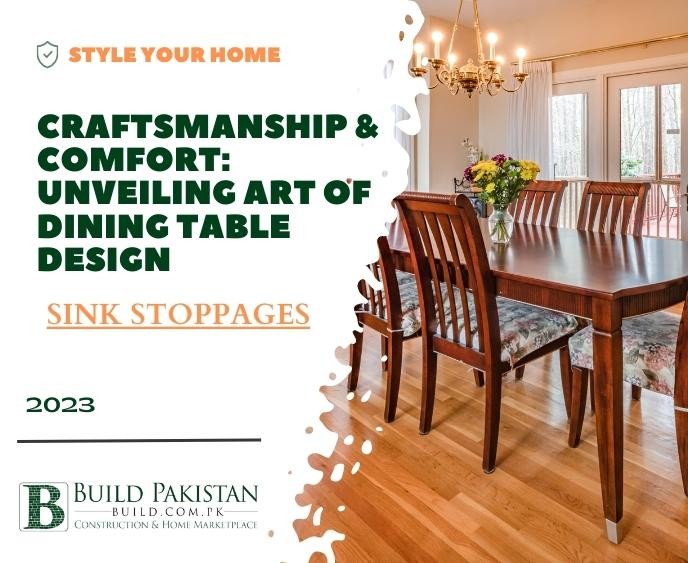Craftsmanship & Comfort: Unveiling Art of Dining Table Design

Introduction:
A dining table is more than just a piece of
furniture; it's a gathering place where families and friends come together to
share meals, conversations, and precious memories. The design of a dining table
plays a pivotal role in setting the tone for dining experiences, blending
aesthetics, functionality, and comfort. In this comprehensive exploration, we
dive deep into the world of dining table desig unveiling its significance,
design principles, materials, shapes, and the transformative impact it has on
the heart of every home.
The Essence of Dining Table Design:
A dining table stands as
a focal point in any home, embodying both utilitarian purpose and artistic
expression. Its design reflects the personality of the homeowner and sets the
ambiance for shared moments.
Harmonizing Aesthetics and Functionality:
The ultimate
challenge in dining table design lies in achieving the delicate balance between
visual appeal and practical functionality. A well-designed dining table
seamlessly marries these aspects, ensuring that it not only looks stunning but
also serves its intended purpose

Key Design Principles
Shape:
The shape of a dining table defines its character and
influences the dynamic of interactions. Rectangular tables exude a formal feel,
while round tables encourage intimate conversations.
Size:
Proportion is paramount. The size of the dining table
should accommodate the number of diners comfortably and fit within the
available space without crowding.
Materials:
The choice of materials defines the table's
aesthetic, durability, and maintenance needs. Common choices include wood,
glass, metal, and stone.
Legs and Base:
The design of the legs and base contributes to
stability and aesthetics. Traditional four-legged tables offer classic
elegance, while pedestal bases create a sense of openness.
Crafting the Perfect Dining Table
Formal Elegance:
Rectangular tables are well-suited for
formal dining spaces, exuding a sense of elegance and symmetry that complements
traditional settings.
Intimate Gatherings:
Round or oval tables create a cozy
atmosphere, ideal for fostering easy conversation durig family dinners or
gatherings with close friends.
Modern Chic:
Contemporary dining tables often feature sleek
lines and minimalist designs, making them a perfect fit for modern interiors.
Impactful Material Choices
Wood:
Wooden dining tables are timeless classics, offering
warmth and versatility. Different wood types, from oak to walnut, bring
distinct aesthetics.
Glass:
Glass tabletops introduce a touch of sophistication
and transparency, making smaller spaces appear larger while showcasing
decorative elements.
Metal:
Metal dining tables add an industrial edge and modern
flair to interiors. Paired with materials like glass or wood, they create
unique contrasts.
Personalizing the Dining Experience
Seating:
The choice of dining chairs can enhance or
complement the table design, emphasizing comfort without compromising style.
Table Accessories:
Tablecloths, runners, placemats, and
centerpieces add personality and create visual interest, reflecting the theme
of the dining area.
Lighting:
Overhead lighting fixtures or pendant lights
enhance the dining table's presence, illuminating the space with a cozy glow.
Transforming Spaces and Experiences
Family Unity:
A thoughtfully designed dining table fosters
family bonding by encouraging members to gather share stories, and connect.
Entertaining Guests:
An inviting dining table becomes the
heart of social gatherings, setting the stage for memorable meals and engaging
conversations.
Visual Harmony:
A well-designed dining table enhances the
overall visual harmony of the dining area, creating a space that's not only
functional but also aesthetically pleasing.
Conclusion:
The Intersection of Art and Functionality: Dining table design is a testament to the synergy of artistry and practicality. A meticulously designed table serves as a canvas where culinary experiences and heartwarming interactions unfold. By considering shape,size, materials, and design principles, individuals have the power to curate dining areas that embrace comfort, style, and unity. Through the art of dining table design, we embark on a journey to transform mealtime rituals into extraordinary moments, infusing our homes with the essence of togetherness and celebrating the intersection of art and everyday life.









